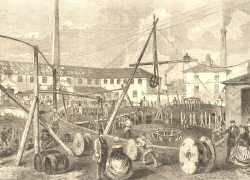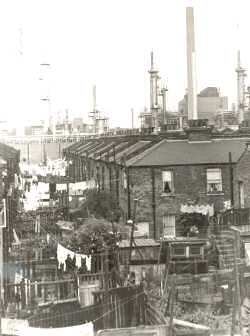History of Greenwich Peninsula
The tongue shaped piece of London in East Greenwich now known as the Peninsula but which was formerly known as Greenwich Marsh has undergone radical changes since the opening of the 19th century.
In 1800 its appearance had changed little since the river was embanked in the Middle Ages. Prior to that this vast area of marshland would have regularly flooded at high tide making it rich in wildlife but unsuitable for farming. After embanking and draining the remote and isolated fields of the Peninsula became highly prized grazing land as well as the haunt of wading and migratory birds.
Alcatel, the telecommunications company, maintains that tradition at Enderby�s Wharf to this day.
By the end of the 19th century most of the open marshland had been developed - the landscape was dominated by vast industrial complexes.
The largest of these was the East Greenwich Gas Works built in the 1880s by the South Metropolitan Gas Company.
A flourishing community of industrial workers grew up on the Peninsula in the 19th century with its own church, St. Andrew in the Marsh, a school (Dreadnought School), shops, public houses, and a transport system that was enhanced by the opening of the Blackwall Tunnel in 1897.
As the manufacturing industries declined after World War II the number of residents dwindled until virtually all of the housing became empty and was demolished. Greenfell Street (right), Boord, Street, Blakeley Buildings, Idenden Cottages are just some of the areas which have disappeared.
The church closed and was then demolished; the school closed, and most of the pubs have closed or been pulled down.
However, having once lost its resident population the building of the Millennium Dome and North Greenwich underground station on the site of the gasworks has led to major new developments like the Millennium Village, a new school, shopping areas and further proposed housing adjacent to the Dome. The Peninsula is being transformed and has a new and growing resident population. In addition, habitats are being created which are bringing back the sort of wildlife that was once common on the marshes but had been displaced by industrial development.






